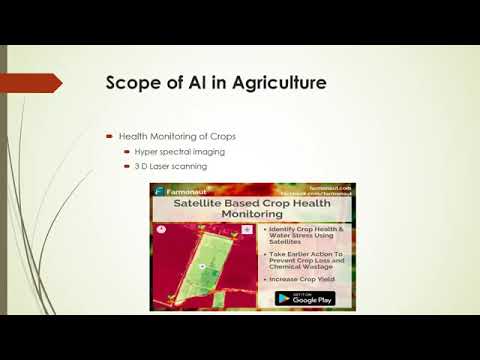2025 MENA Economic Growth: 7 Key Trends to Watch
“MENA’s private sector is projected to contribute over 60% of regional GDP growth by 2025.”
Table of Contents
- Introduction: MENA Economic Growth in 2025
- Trend 1: Economic Policy Shifts and Global Environment Impacts
- Trend 2: The Impact of Oil Markets on MENA Economies
- Trend 3: Private Sector Development—A New Growth Engine
- Trend 4: Labor Market Productivity in MENA
- Trend 5: Women Participation in the Labor Market
- Trend 6: Agricultural Sector Recovery in MENA
- Trend 7: Inflation, Trade Dynamics, and Regional Growth Forecasts
- MENA Region: 2025 Key Economic Indicators by Country
- Farmonaut and the Role of Technology in Boosting Regional Growth
- Explore Farmonaut Solutions
- Farmonaut Subscription Plans
- FAQs – MENA Economic Growth 2025
- Conclusion: The Road Ahead for MENA Economies
Introduction: MENA Economic Growth in 2025
The Middle East and North Africa (MENA) region stands at a transformative crossroads in 2025. According to the latest World Bank report, “Shifting Gears: The Private Sector as an Engine of Growth in the Middle East and North Africa,” our region is forecast to moderately accelerate its economic growth in the coming year, despite global uncertainty. Growth in MENA is estimated at 1.9% in 2024, with 2025 expected to see an uptick to 2.6%. This optimism is tempered by the volatile global environment, fluctuating oil markets, persistent inflation, challenging trade dynamics, and ongoing conflicts.
To truly unlock our region’s potential, we must examine—and act on—the major trends shaping our economic landscape. In this definitive industry analysis, we explore the 7 key trends driving Middle East and North Africa economic growth in 2025. From private sector expansion and labor market productivity to the impact of oil markets on economies and the pivotal role of women in employment, our discussion draws from the fresh data, expert insights, and proven innovation.
Trend 1: Economic Policy Shifts and Global Environment Impacts
Adapting to Volatile Global Dynamics
As we look to accelerate growth across the Middle East and North Africa, it is critical to understand that our regional landscape is deeply intertwined with the uncertainties of the worldwide economy. The ongoing recovery is shadowed by extreme weather shocks, policy developments, and volatile trade dynamics. Unpredictable shifts in major economies’ policies, including interest rate changes, trade disputes, and sanctions, directly impact both oil exporters and importers across our region.
The World Bank notes that these uncertainties can trigger ripple effects: when trade dynamics turn volatile, inflation spikes and global demand weakens. MENA economies, especially those reliant on exports or with significant import needs, must remain agile. Governments and private enterprises alike are reevaluating their strategies—increasing resilience by diversifying sources and creating robust safety nets for their most vulnerable sectors.
Trend 2: The Impact of Oil Markets on MENA Economies
Oil Production Policy, Price Volatility, and Regional Disparities
Perhaps nowhere is the relationship between the global environment and the regional economy more visible than in the impact of oil markets on economies. For MENA oil exporters, 2025 brings a cautious optimism as plans to roll back production cuts are expected to spur growth. Yet, the volatility of oil prices and demand remains a double-edged sword for countries such as Saudi Arabia, UAE, and Kuwait.
On the other hand, oil-importing countries (e.g., Egypt, Morocco, Jordan) look to benefit from easing inflation and favorable market conditions—if energy prices remain stable. The oil & gas sector’s fate has downstream impacts on jobs, investment, and currency stability across all of North Africa and the Middle East.
- Oil revenue influences public spending, industrial policy, and infrastructure growth.
- A volatile oil market can magnify fiscal deficits and limit governments’ ability to invest in non-oil sectors.
- Economic diversification is a growing policy priority for nearly every country in MENA.
Key Example
Saudi Arabia’s Vision 2030 has set a blueprint for reducing oil dependency, spurring private sector development, and boosting innovation in labor markets.
The quest for sustainable growth requires MENA economies to seize the potential of their strategic oil reserves while accelerating reforms in business and labor.
Trend 3: Private Sector Development—A New Growth Engine
One of the most pivotal findings in the World Bank’s “Shifting Gears” report is how MENA private sector development is critical to regional progress. Stronger, more dynamic businesses are essential for creating jobs, fostering innovation, and boosting labor market productivity in MENA.
- Most MENA private firms lack dynamism: few invest or innovate, and business entry/exit is sluggish.
- The divide between a small formal sector and an expansive informal sector continues to drain productivity.
- Private businesses too often rely on government contracts, distorting competition and disincentivizing risk-taking.
To unlock sustainable growth, governments must serve as stewards of competitive markets—improving regulation, supporting entrepreneurship, and opening doors for new entrants.
What Drives a Dynamic Private Sector?
- Transparent competition policies
- Access to finance and reliable digital infrastructure
- Support for managerial best practices and business capacity-building
- Robust labor market data and performance incentives
Trend 4: Labor Market Productivity in MENA
A major obstacle to Middle East and North Africa economic growth has been lagging labor market productivity. The decline is pronounced across many MENA economies, especially in traditional industries and among the youth population, despite high rates of education.
To boost productivity and accelerate economic progress, we must address the factors holding back the workforce:
- Lack of innovation and slow adoption of new technologies
- Overreliance on low-value-added sectors, particularly in informal employment
- Limited skills development and inadequate on-the-job training
- Women and youth remain underrepresented in key growth-driving industries
The World Bank estimates that improving labor market productivity can transform our regional trajectory—creating millions of new jobs and injecting as much as $1 trillion in increased output over the next decade.
“Boosting labor productivity could increase MENA’s economic output by $1 trillion over the next decade.”
Unlocking Labor Potential: Steps Forward
- Investing in upskilling and digital literacy
- Aligning educational programs with market needs
- Providing incentives for businesses that invest in worker training
Trend 5: Women Participation in the Labor Market
The underutilization of human capital—especially the talents and skills of women—is a persistent challenge throughout MENA. The World Bank highlights that closing the gender employment gap could increase income per capita by up to 50% in a typical MENA economy.
- Currently, women’s participation in the formal labor market is among the lowest globally.
- Dismantling barriers to entry and advancement is key to unlocking growth and innovation potential.
- When more women lead businesses, broader hiring of women is fostered, multiplying the positive impacts.
Creating policies that promote flexible work arrangements, enforce fair pay, and support entrepreneurship among women boosts human capital in MENA, directly driving competitiveness.
Trend 6: Agricultural Sector Recovery in MENA
For nations in the Middle East and North Africa, the agricultural sector remains both an opportunity and a vulnerability. Weather shocks and resource constraints continue to threaten food security and rural employment. However, a recovery is underway in some economies—driven by government reforms, better weather, and the adoption of cutting-edge technology.
Technology plays a transformational role in agricultural sector recovery in MENA:
- Satellite-based crop health monitoring, AI, and blockchain are helping farmers maximize yields and sustainability.
- Real-time weather forecasting and soil management reduce losses from climate volatility.
- Digital advisory tools (like Farmonaut’s Jeevn AI system) provide actionable insights to boost productivity and profitability, empowering even smallholder farmers.
- Resource management and environmental tracking ensure long-term food system resilience.
Trend 7: Inflation, Trade Dynamics, and Regional Growth Forecasts
The inflation surge of recent years has strained MENA households and businesses alike. In 2025, however, inflation in many Middle Eastern and North African markets is set to ease—stimulating consumer spending and supporting a rebound in non-oil sectors.
- For oil-importing countries, this rebound is further bolstered by improved agricultural yields and a global loosening of monetary policy.
- Nonetheless, high uncertainty remains due to volatile trade dynamics, policy developments, and the ongoing impacts of regional conflicts.
Governments and businesses must stay alert, proactively managing risks and adapting policies to safeguard growth and ensure economic progress.
MENA Region: 2025 Key Economic Indicators by Country
Understanding national and subregional differences is essential for grasping the opportunities and challenges facing MENA economic growth. Below is a comparative table highlighting 2025’s most relevant indicators for selected countries throughout the Middle East and North Africa.
| Country | Est. GDP Growth Rate 2025 (%) | Private Sector Growth Prediction | Oil Market Impact | Labor Market Productivity Index* | Notable Trend(s) |
|---|---|---|---|---|---|
| Saudi Arabia | 3.0 | Moderate Increase | High/Positive | 52 | Vision 2030 reforms, gradual oil recovery, digital sector growth |
| Egypt | 3.2 | Solid, Agriculture-led | Low/Indirect | 46 | Agricultural sector rebound, inflation easing, FDI interest |
| United Arab Emirates | 4.0 | High, Diversified | Moderate/Positive | 59 | Tech hub, logistics growth, dynamic business regulation |
| Morocco | 2.8 | Modest, Agro-industry | Low | 44 | Agri-exports, rural development, renewable investment |
| Kuwait | 2.7 | Limited, Oil-centric | High/Positive | 54 | Oil output rebound, capital market reform |
| Jordan | 2.6 | Growing, Services | Low | 42 | Migrant labor integration, skills reforms |
| Tunisia | 2.1 | Cautious, Industry focus | Low | 41 | Tourism recovery, SME support, political transition |
*Labor Market Productivity Index is a composite, estimated score (0–100) based on formal sector productivity, labor participation and skills use.
Farmonaut and the Role of Technology in Boosting Regional Growth
In the new economic landscape, digital innovation is indispensable for creating jobs through innovation and building resilient economies—even more so within agriculture, one of MENA’s historic keystones. Farmonaut emerges as a leader in empowering farmers, businesses, and governments with affordable, real-time agri-intelligence—accelerating progress across the Middle East and North Africa region.
-
Satellite-Based Crop Health Monitoring:
Accurate monitoring of vegetation, soil moisture, and pest risks allows farmers to optimize crop yields and resource use, crucial for food security and environmental resilience. -
Jeevn AI Advisory System:
Provides real-time crop management recommendations—empowering farmers to make evidence-based decisions, reduce costs, and accelerate productivity improvements. -
Blockchain-Based Traceability:
Enables transparent, fraud-resistant supply chains in sectors like agriculture and textiles.
Learn more about Farmonaut’s Traceability Solution. -
Fleet and Resource Management:
Optimizes vehicle use and machinery oversight for large agribusinesses and farm managers. This system helps cut logistics costs and enhance operational transparency.
Explore Farmonaut’s Fleet Management Benefits. -
Carbon Footprinting:
Monitors emissions data, supporting sustainable farming initiatives as the region moves to meet growing climate goals.
See how Farmonaut helps MENA reduce its carbon footprint. -
Resource Management and Large Scale Farm Admin:
Enables scalable, modular solutions for government agencies, NGOs, and large plantations.
Discover the Large Scale Farm Management Platform. -
API Integration:
Easily connect with Farmonaut’s satellite and weather data in your proprietary software.
Access Farmonaut’s API here or see the
Developer Docs.
With Farmonaut’s technology, the region’s agribusinesses and governments can monitor, adapt, and future-proof operations for sustainable growth and resilience.
Farmonaut Subscription Plans
Ready to boost productivity, unlock transparency, and futureproof your enterprise or government project? Explore Farmonaut’s flexible, accessible subscription offerings below.
Explore Farmonaut Solutions
- Open Farmonaut App for Real-Time Farm Intelligence
- Trace Your Product’s Journey With Blockchain-Based Transparency
- Calculate & Track Farm Carbon Footprints Efficiently
- Optimize Agricultural Fleet & Machinery Operations
- Manage Large-Scale Farms and Government Survey Projects
FAQs – MENA Economic Growth 2025
- Q: What’s the projected Middle East and North Africa economic growth rate for 2025?
A: The World Bank forecasts a growth rate of 2.6% for the MENA region in 2025—up from an estimated 1.9% in 2024, though subject to significant uncertainty.
- Q: How do oil markets impact MENA economies?
A: Oil exporters benefit from higher prices and production, which drive fiscal and employment gains. However, volatility in oil markets can rapidly affect national budgets and growth forecasts across the region.
- Q: Why is private sector development in MENA so important?
A: A dynamic private sector is essential for creating jobs, fostering innovation, and reducing dependency on government spending and oil revenues. Stronger businesses drive labor market productivity and resilience.
- Q: How does agriculture influence regional growth?
A: The agricultural sector remains vital in many North African and Eastern Middle Eastern economies, supporting rural jobs and food security. Its modernization and recovery are key for overall prosperity.
- Q: How can businesses and governments in MENA boost labor market productivity?
A: Invest in skills development, support tech adoption, promote gender inclusion, and incentivize business innovation—while leveraging technology platforms like Farmonaut for data-driven decisions.
- Q: What are the main risks to MENA economic progress in 2025?
A: Risks include ongoing conflicts, policy uncertainty, global trade volatility, price shocks in oil or food markets, and slow reform implementation.
Conclusion: The Road Ahead for MENA Economies
The Middle East and North Africa economic growth story in 2025 is one of cautious optimism. We stand at a pivotal moment—where accelerating private sector development, rejuvenating labor market productivity in MENA, and boosting human capital are no longer mere ambitions, but strategic imperatives. By proactively harnessing both policy reform and digital innovation (as enabled by platforms like Farmonaut), the region can weather uncertainty, unlock sustainable growth, and deliver prosperity for the next generation across the Middle East and North Africa.
Stay informed, stay resilient—and be part of the region’s transformation.






















